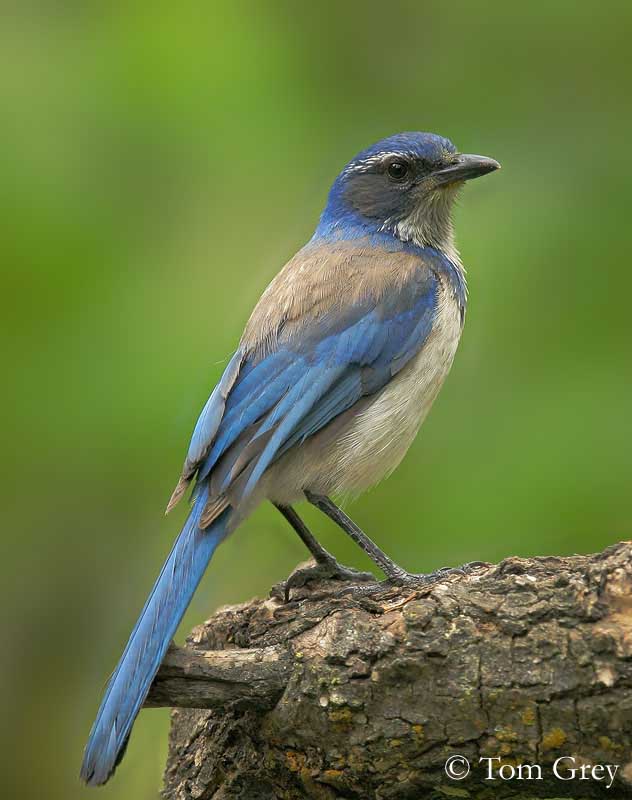
Western Scrub Jay
Aphelocoma californica
Passeriforme Order - Corvidae family
BIOMETRICS:
Length: 28-30 cm ; Wingspan: 39 cm ; Weight: 70-100g
LONGEVITY: up to 15 years
DESCRIPTION:
Western Scrub Jay has blue upperparts with grey-brown back. Long tail is blue above, but undertail coverts vary from bluish to dark grey buff as flanks.

Underparts are greyish, with variable bluish band on the whitish breast.
Western Scrub Jay has blue head, with distinct white eyebrow, and white throat. It has dark cheeks.
Bill is black, and may be different, according to the food found in the habitat. We can find slightly hooked bills to eat acorns, but also long, thin, pointed bills in pine areas, to extract seeds from pine cone scales. The shape of the bill helps the bird to open its food, according to the area.
Eyes, legs and feet are black.
Both sexes are similar.
Juvenile has brown head, and it is duller than adults.
VOICE: SOUNDS BY XENO-CANTO
Western Scrub Jay’s call includes raspy “shreep” in short series. It utters loud and harsh calls “quay-quay-quay”. It is silent near the nest, but frequently noisy apart from it.
HABITAT:
Western Scrub Jay inhabits scrub oaks and juniper woodlands, oak and pine woodlands, but also suburban areas, gardens and orchards.
RANGE:
Western Scrub Jay is resident in most of California, except in southern desert, lower central valley, and higher elevations in Sierras.
This species only performs some movements to feed.
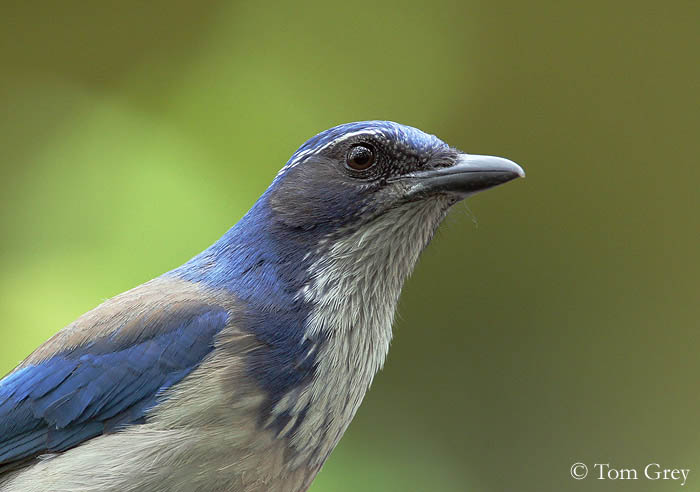
BEHAVIOUR:
Western Scrub Jay is omnivorous. It likes to hide acorns into the ground, and the acorns germinate. When the bird finds acorns, it carries them to another place, and buries them for later. But it forgets where the food is, and acorns have a chance to grow and become trees.
To eat, it pecks at an acorn, perched on a log, and using the bill as a cutting board, it hammers away.
It may perch on the cattle and deer, searching for ticks, hovering over their bodies and heads to get them.
Western Scrub Jay forages on ground and trees, in pairs, in family groups, or in small flocks, except during the breeding season.
Western Scrub Jay does not migrate, only some birds disperse in fall.
Pair defends its territory, uttering vocalizations and chasing intruders; sometimes, dominant male pecks subordinate individuals.
Male performs a courtship display, hopping around female with erected head and fanned tail dragging.
FLIGHT:
Western Scrub Jay performs short flights, ending with a sweeping glide.
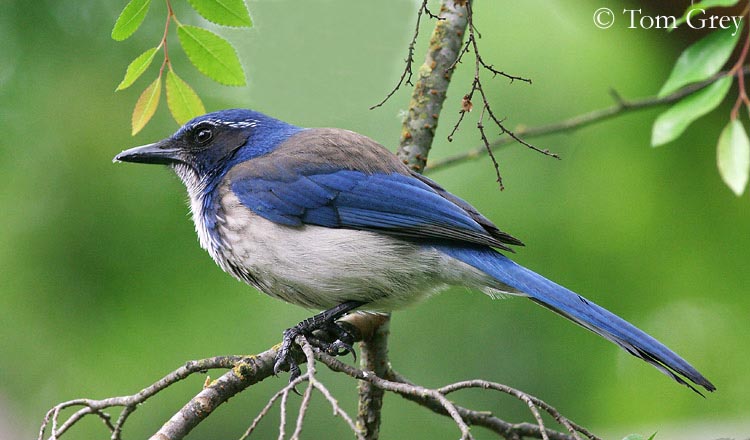
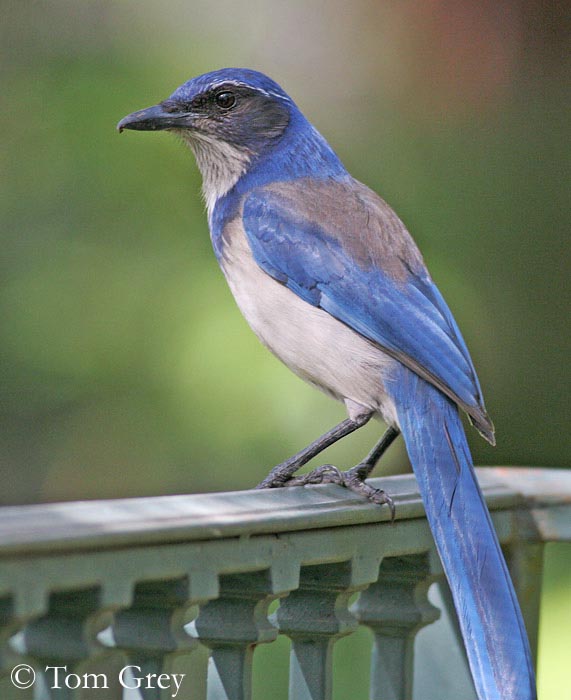
REPRODUCTION:
Western Scrub Jay’s nest is well hidden in small tree or in dense shrub. It is an open cup, built by both adults and made with twigs, inner with small twigs and rootlets, and lined with plant fibres, rootlets and hair. Western Scrub Jay is a solitary nester.
Female lays 2 to 6 greenish or greyish white eggs, spotted with dark spots. Incubation lasts about 15 to 17 days, by female, fed by male during this period. Chicks hatch altricial, and they are fed by both parents. Young fledge at about 18 to 19 days of age.
This species produces one single brood per season, rarely two.
DIET:
Western Scrub Jay feeds on a variety of animal food in summer, including small reptiles, mammals and amphibians, eggs and nestlings of other birds, and insects.
In winter, they eat seeds, nuts, berries and acorns.
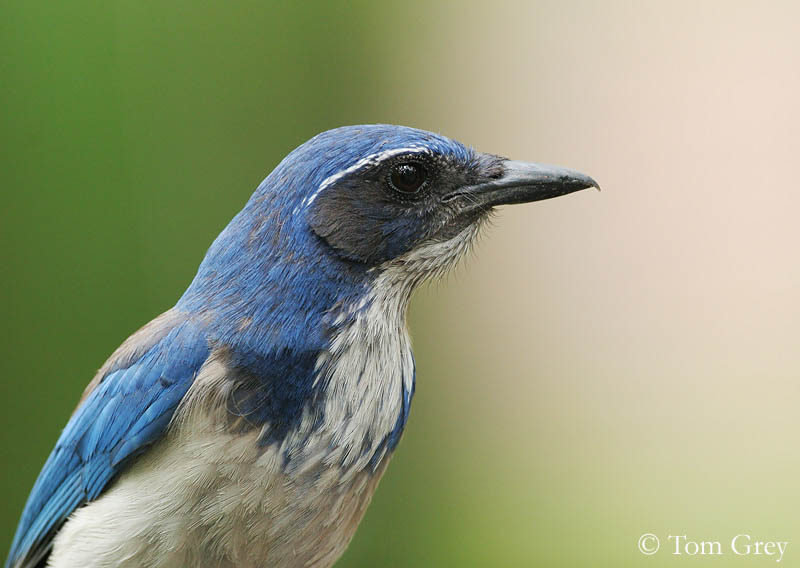
PROTECTION / THREATS / STATUS:
Western Scrub Jay has an important role with its acorn planting behaviour. It has expanded its range since 1970, due to increased urban development and feeding by humans.
Fr: Geai buissonnier
All : Buschhäher
Esp : Urraca Azuleja
Ital : Ghiandaia di macchia
Photographs by Tom Grey
His website:
Tom Grey's Bird Pictures
Text by Nicole Bouglouan
Sources:
FIELD GUIDE TO THE BIRDS OF NORTH AMERICA - National Geographic Society - ISBN: 0792274512
All About Birds (Cornell Lab of Ornithology)
Bird Web (Seattle Audubon Society)
What Bird-The ultimate Bird Guide (Mitchell Waite)
Wikipedia (Wikipedia, The Free Encyclopedia)